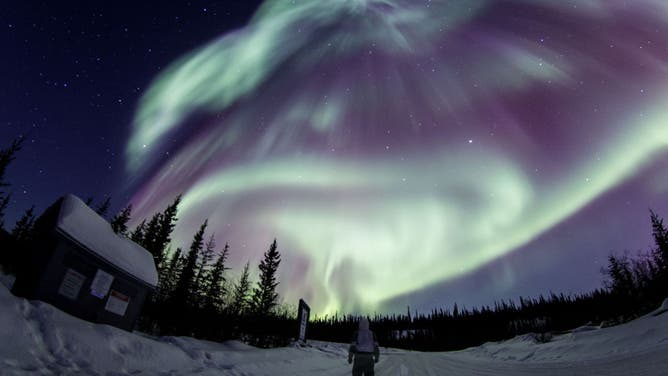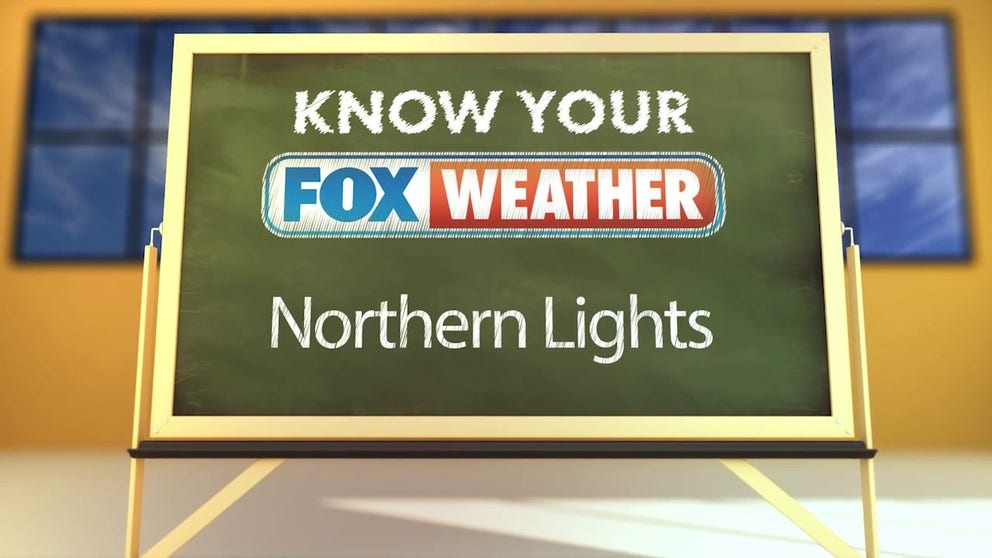Geomagnetic Storm Watch in effect as vivid auroras could be on display this week
NOAA detected a solar flare on Jan. 20 that will send charged particles towards the earth, interfering with Earth's magnetic field, resulting in auroras.
Know Your FOX Weather: Northern Lights
FOX Weather meteorologist Stephen Morgan breaks down the Northern Lights and how you can see them.
NOAA issued a Geomagnetic Storm Watch for Monday and Tuesday, indicating the possibility of Northern Lights for parts of the U.S.
"A CME was observed lifting off the Sun on 20 Jan and is expected to cause up to G2 (Moderate) geomagnetic storming on 22-23 Jan," posted NOAA Space Weather. "A watch has been issued."
Aurora alert: Northern Lights forecast
The Space Weather Prediction Center forecasts moderate auroras from 4 p.m. on Monday to 4 p.m. on Tuesday Eastern, with the greatest energy hitting our atmosphere and producing a moderate to active aurora on Monday from 4 to 7p.m. Eastern and Tuesday morning from 1 to 4 a.m. Eastern.

The amount of cloud cover expected Monday night into early Tuesday morning.
(FOX Weather)
SOLAR SUPERSTORM COULD ‘WIPE OUT THE INTERNET’ FOR WEEKS OR MONTHS, SCIENTIST SAYS
Who can see the lights?
The view line, those cities that should be able to see the Northern Lights, stretches from Seattle to southern Iowa and the northern half of New York to northern New England. Unfortunately, a new storm pushing in from the West Coast and another storm making its way through the center of the country will create widespread clouds.
Aberdeen, South Dakota; Sioux City, Iowa; Dickinson, North Dakota; Glasgow, Montana; Marquette, Michigan; Watertown, New York; Burlington, Vermont; Conway, New Hampshire; and Augusta, Maine, could possibly see the aurora if the clouds cooperate. Click on each city to see the forecast.
ROUNDS OF ATMOSPHERIC RIVER STORMS TARGET WEST COAST AS FLOODING CONCERNS IN CALIFORNIA RISE

View of an aurora borealis storm during midnight in Yellowknife. (Photo by Dominic Chiu/SOPA Images/LightRocket.)
(Getty Images)
Much of the northern tier will be clouded over Monday night into Tuesday morning.
What happens during a geomagnetic storm?
Solar flares can trigger CMEs or Coronal Mass Ejections, which launch a stream of charged particles into space. Those particles interact with Earth's magnetic field and transfer energy into the upper atmosphere.
As charged particles interact with oxygen and nitrogen in the atmosphere, they briefly energize the gas molecules, which give off light as they de-energize.
Solar flares can also play havoc with our electric grid, GPS and radio waves. The geomagnetic storm is forecast to be minor to moderate. That translates to a 60% chance of minor to moderate radio blackouts and a 10% chance of strong radio blackouts.
THE DAY THE NORTHERN LIGHTS COVERED THE PLANET: HISTORY OF EARTH'S GREATEST SOLAR STORMS

Aurora in Valley City, North Dakota
(Chris Wicklund / FOX Weather)
NOAA PREDICTS STRONGER PEAK OF SOLAR ACTIVITY IN 2024 THAN ORIGINALLY ANTICIPATED
NOAA forecasts the current solar cycle will ramp up and peak in 2024. That could mean we see auroras more often in the U.S.
